Introduction
Have you ever considered that your food may be processed in the brain as a drug?
This week on The Goodness Lover Podcast we spoke with Dr. Joan Ifland - Doctor of Addictive Nutrition, Food Addiction Expert, Lead editor and author of the textbook "Processed Food Addiction," Fellow of the American College of Nutrition, and an innovator in food addiction recovery programs.
Watch the Interview:
Follow along on this episode as Dr. Ifland reveals:
🥓 How 141 different diseases are associated with processed foods
🔺 How the food pyramid played a role in food addiction
🧠 How the body and brain become addicted to foods
♻️ What is happening in the reward center of the brain when you just can’t stop eating
🥊 How to fight cravings and an addiction to food
We learned about Dr. Ifland’s educational journey to studying food addiction, including her personal story with food addiction, and SO much more!
Listen along as Dr. Joan Ifland explains how the food industry was able to market highly addictive foods and how to break free from food addiction!
Additional Resources
To connect with Dr. Joan Ifland and discover more of her work, you can find her on Instagram, Facebook,Facebook You can also visit her website for "Processed Food Addiction"here and the second one for "Food Addiction Reset"hereTranscript
Sarah: Hello, and welcome back to the Goodness Lover Show. Today we're joined by Joan Ifland, PhD, who is an author and researcher in food addiction. This was an extremely eye opening episode, and we can't wait to show you what we talked about. Let's dive in.
Matt: Dr. Joan Ifland, we are so privileged to have you here on the show with us.
Dr. Joan Ifland: Thank you. It's an honor for me. Thank you so much for what you do, and the people whom you help. I appreciate that.
Matt: And likewise, back to you. We've actually been looking to talk to a food addiction expert for a long time.
Sarah: A long time.
Matt: I've actually been researching this topic for years, just off and on just trying to get my head around it. And we saw one of your talks. We were like, "Wow, like this is amazing." So you guys are in for a treat. So we can't wait to dive into the material.
Dr. Joan Ifland: Thank you.
Matt: Awesome. So where did it all start? We had this normal looking food. And then all of a sudden, we've got this addictive food. I mean, was it just by accident? Was it just by marketing, or was it intentional?
Dr. Joan Ifland: It was highly intentional. This particular round of profiting from the masses through food really started in 1963. And that is when one of the US tobacco companies bought a sugary drink company called Hawaiian Punch. And Hawaiian Punch had been an alcohol mixer. This tobacco company thought that they could transfer their tobacco marketing model to sugar for children. And they did. So in tobacco, they used a technique called surround marketing, where they hid extra nicotine in the cigarettes.
So that's part of the addiction business model is to hide the addictive substances in the product. And then present the product as something fun, until the person has used it enough times to hyper activate, reward brain cells, in other words, create the addiction. And then they provoke the addiction, they stimulate the addiction, they're constantly getting those addicted brain cells to create a flood of craving chemicals in the brain, that are strong enough to control behavior.
And that is the key. If you understand that about brain function and addictions, you can understand everything else, because what that's doing is it's pulling the blood supply away from the frontal lobe. The frontal lobe is reasonable. It's braking, like, "No, we don't want to do that." But the frontal lobe is only 2% of the brain. So the rest of the brain, the other 98% of the brain is being addicted and provoked, stimulated into controlling behavior.
So that was what they did with tobacco and what they hoped to do with sugar for children. So they do this surround marketing. And how do we know all this? Because as part of the tobacco settlement in the courts in the US, the tobacco companies were required to deposit 40,000 documents with the University of California at San Francisco. That center started a food center. And so they are now combing through those 40,000 documents.
And they found a document describing this transfer of tobacco marketing to sugar for children. And so they took the same colors, they took the same idea of a range of flavors. They diversified cigarettes into menthol and light and so on. So they diversified the flavors of the juice boxes. And this is why a juice box it has the same shape and color as a pack of cigarettes. And so just like you would buy 20 cigarettes at a time you buy three juice boxes at a time.
And they were able to get the sugar content up to the point where they could addict children. They use the same marketing techniques as they used for tobacco. There was a Marlboro man logo warehouse, where you could get a Marlboro jacket and you could get a Marlboro lighter and they would try to sell Marlboro book covers to high schoolers. So all these logos to remind you to buy Marlboros. They created a logo, a mascot for Hawaiian Punch, a little Hawaiian character named punchy. And you could buy punchy logoed toys.
So they brought over this surround marketing, the child is playing with punchy toys, it's activating the addicted brain cells. And the child is constantly bugging the parents for Hawaiian Punch. It worked. So other tobacco companies bought Capri Sun, other juice companies. Then in the 1980s, high fructose corn syrup came on the market, the product has to be cheap in order for the person to buy it often enough to actually become addicted to it.
So cigarette manufacturing actually became addictive when they invented the rolling machine. So before that cigarettes were expensive, because they had rows of people, and cigarette rolling factories, rolling them by hand. But once they got a rolling machine, they could get the price down low enough to addict people to the nicotine. So when high fructose corn syrup came on the market, that was a very, very cheap sweetener. And it kind of broke the sugar cartel in the south of the United States, based on sugar cane.
And that's criteria number three, you have to have addictive substances in the product and be able to hide them there. You have to make it very, very cheap so that's affordable. So it's the five A's of the addiction business model, addictive properties available, it's got to be everywhere, heavily advertised, affordable, very cheap, and then focused on the youngest age of onset possible. The younger you addict a person to a substance, the harder it will be to break that addiction.
So they were taking out the tobacco vending machines, and they were just putting in soda and snack machines. It really took off in the mid 1980s, when the tobacco companies bought Kraft, Nabisco and General Foods in the space of two years, 1985 to 1987. And immediately, you see, these horrendous practices. So immediately, for example, Saturday morning, cartoon commercials for processed foods were already running at about 150 per morning. Within seven years, it was 550. So we have research showing that this repeat exposure to the stimulation, the reminders, the messaging, that is enough to create greater and greater sensitivity in the addicted brain cells, which means greater and greater floods of these craving chemicals being released in the brain. And that's plenty enough to get control of behavior. That's where it started.
Matt: Well, Joan, you really started off this podcast with a mic drop moment. And we've just started.
Dr. Joan Ifland: It gets worse.
Sarah: Where do we go from here? Wow, so many questions.
Matt: Oh, gosh. I saw in one of your excerpts on your website that one of the tobacco heads owned 10% of the American food industry. Is that right? Could you tell us a little bit about that?
Dr. Joan Ifland: Yes. So within a couple of years tobacco controlled, I think just Kraft controlled 10% of American spending on food. It was that fast. It was so fast. And the thing about the tobacco industry is when they started losing market share in the United States they turned to the US State Department and they said, "Help us get out into the rest of the world." And the State Department said, "Sure." Because the US government we are pretty clear is not there for the public. It's there to help businesses.
This is a capitalist, unregulated capitalist society. So I have an undergraduate degree in Economics and Political Science. And then I have my MBA from Stanford. And you would think, "Boy, that's a really weird background." For somebody who's involved in food. It's like, no, that is the perfect background. You have to understand that we don't have help with this. It's so frigging profitable. That the United States Department of Agriculture exists to protect agribusiness. And so every business has to sell all this corn and wheat and sugar and dairy that's produced in the United States. They have to sell it somewhere. So to an addiction, okay, that's fine, we'll take that.
And they're not there for us. They're there for the Food and Drug Administration is there for the food and drug companies. So they were able to get, with the help of the State Department to get into third world countries with tobacco. What did that mean? That meant they had relationships with the corner convenience store, the little stalls where they would sell whatever the neighborhood needed. So they got their tobacco products in there. And then they, of course, remember, availability is just one of the A's. Another A is advertising. So they established all their advertising relationships with television in those countries, around the world.
I mean, the leading cause of preventable death in the world for a long time has been smoking. But there were all those relationships. So when processed food came along, they were able to pump it out through those channels very quickly. When you consider that diet related diseases overtook smoking related diseases as the leading cause of preventable death around the world, within 20 years. This is nothing. This is just a blink of an eye in terms of global trends, but there it is. They were able to spread processed food addiction and obesity around the world in an astonishing short period of time. They had the channels all set up to do it.
Matt: Yeah. And I guess the capital from all that market share they had in tobacco, and then I saw these trends, and then bang. But, yeah, an incredible move, which is strangely ignored, in that people don't talk about this. So it's so good that we're talking about this. So many questions-
Dr. Joan Ifland: Yeah, thank you, thank you.
Matt: Yeah, you're doing such important work. So just trying to think, there's so much more we can go down this angle. And I've got so many questions just on the tip of my tongue, but I'm assuming someone listening to this as maybe a little bit overwhelmed at this point and feeling maybe a bit helpless. Maybe you could just go in and demystify what they actually did to food. And then we can then touch on how we actually get out of this.
Dr. Joan Ifland: Okay, super. So remember, one of the A's is to hide addictive substances in the product. Because nobody would ever buy a product that they knew that they would get hooked on and the addictions are quite harmful. So nobody ever answered the phone one day and said, "Oh, yes, I'd love to be addicted to cigarettes. No, no, I don't mind getting lung cancer." Nobody gets those phone calls. And nobody took a phone call saying, "Oh, there's a lot of sugar, and fat and salt hidden in my bread now, oh, I'll run out and get two loaves, because I want to have diabetes. And I want to have heart disease."
No, nobody ever got that phone call. So what happened was about this time, the mid 1980s, a couple of things happened. The United States published a food pyramid. And these corrupt scientists who were on the take with the sugar industry they made the whole bottom row of the food pyramid refined carbohydrates, which are highly addictive. Because the structure the agriculture industry, was to force small farmers off their small farms, and turn miles and miles, particularly in the Midwest in the US, the Great Plains into corn and wheat production.
Because they now they had giant machinery that could plant and harvest those crops, cash crops, not for eating, not for the farmer to eat. But for the farmer to sell in a co-op to these giant silos, which you see in the Great Plains of the US. I think Australia has this kind of farming as well. And that we go off in railroad cars to be milled into white flour, which they persuaded Americans was superior to brown breads, which it's not. Highly addictive, very destructive substances.
But that's what the US government is there for, is to protect these industries, to make America, the US the greatest agricultural country in the world. It's not there to protect its citizens from corrupt foods. So we don't have any protection here in the United States. The rates of disease coming out of these processed food-like substances, they're not food, the body's not reading them like food. There is a feeding center in the brain, that center is not being disturbed by these substances. Because the body's not reading them like food, the body's reading them like a drug.
Sarah: Wow. So it's not reaching the-
Dr. Joan Ifland: It explains a lot.
Sarah: Yeah. So I guess the hypothalamus, is that what we're talking about? That would maybe say, I'm satiated? It's just not triggering those responses?
Dr. Joan Ifland: No, no. It's quite complicated with the hormones and the appetite peptides and so on. But basically, the braking system is not working. The most important part of the braking system that's not working is the frontal lobe. And it's not working because the blood supply is being pulled off into the addicted brain cells. They are hyperactive, they are pulling the blood supply back into the, it's the midbrain, the reward centers. And the frontal lobe doesn't have enough blood supply to say no, I don't want to do that. So this actually is the segue into how you fix this, you can fix this.
Matt: I'm assuming there'll be many people like myself that you would think about all that time when I started one certain cookie, I won't mention. But then I finished the entire packet. And you're just like, "What..." And at the end, you're like, "What just happened?" That I just couldn't stop. And so you're saying that that's definitely intentional.
Dr. Joan Ifland: It's quite deliberate. So, I think during the same time period, that the United States was actually going to start not just trying to control the tobacco companies. But now tobacco companies could see that the United States government was going to promote these highly addictive substances. In this bottom row of the food pyramid, all refined carbohydrates.
So they went and hired, there was one consultant, his name is Howard Moskowitz. PhD from Harvard, in experimental psychology of marketing, he had developed this method for maximizing the amount of sugar, fat, salt, that could be added to a product, hidden in a product before the consumer would reject it. So we know that when you put sugar or fat or salt in your mouth, the brain reacts within half a second. So other drugs like cocaine or smoking, it takes 10 seconds, or it takes 10 minutes, you have to get into the blood supply.
But sugar, fat, salt, there are direct neuro pathways to the brain, that vagus nerve, for example, and within half a second, you're getting a reaction. These are highly addictive substances. And Howard Moskowitz had hired himself out to all the corporations, once one product got the Howard Moskowitz treatment, and sugar, fat salt, and that product was maxed. All the other products had to do it. Because the addiction would tell the person that controlling the behavior, "Oh, buy that one. I know that has the most sugar in it." So even like tomato sauce, went from having only its own natural tomato carbohydrate in it, to having added sugar and became addictive. So tomato sauce became addictive. And then all the tomato sauces had sugar added to them. And he went through all the products in these food corporations and maxed out the sugar, fat salt in them.
Matt: Wow, you think of the downstream effect of this, like we could be looking at this thinking, "Oh, that's almost... Oh, that's just marketing or that's free market capitalism." But certainly, I think, far more sinister because now we understand there's a connection between food and disease and the unbelievable load on the public health system that now this has created is certainly disgusting in my brain.
Dr. Joan Ifland: It's unimaginable. I don't know how these people sleep at night.
Sarah: I know.
Matt: So how do we break free from this? Because someone might be feeling extremely helpless in this situation. That there's been these people behind boardrooms that have made all these decisions about their food, and they have encroached upon government to Influence certain dietary patterns that has been with them since they were kids. How do you break this?
Dr. Joan Ifland: So I wondered that for 22 years. I got off of just sugars and flours in 1996. And I had been trying to solve a rage problem since I was born. I'm pretty sure since I was born, because my parents raged. And I had a really traumatic upbringing as a result. And it was violent rage, and it was very unpredictable. So the abuse was just terrifying as a child.
So come 1983, 1984 I have my own two children. And my most desperate desire is that I not rage. And there I am, I'm standing there raging. I'm like stepping outside myself watching myself rage and wishing I would stop. So I did the therapy, and I did the women's healing groups, and I did the 12 step groups, nothing touched it. I could be out of my skin raging in a nanosecond. And it was terrifying. And it was shameful. And I just hated it. So I was also yo-yo dieting after I had my kids, I quit smoking. So what do you do when you quit smoking, you start eating.
I was very thin, all growing up. Because even though I was addicted as a child, my mother was the modern mother and she didn't cook, because that's what the processed food industry told her. Modern women don't cook. They use cake mixes, and they use white bread. So we were raised on those products. And the kids were fighting with each other all the time, too. So finally, I had such severe allergies. I had this constant sinus infection. I had bloating, I couldn't sleep, I was always tired, I had brain fog. There I was what this prestigious business degree and I couldn't go back to work. I was too sick. And I was in a 12 step group for bad personalities, I'll call it and a person in that group stopped me and said, "Why don't you try this 12 step group, which eliminates sugars and flours, like there were drugs." And I thought, "Oh, she's talking about my weight." And at that point, I was kind of in a thin phase. She wasn't talking about my weight, she could hear the sugar driving, the raging and the anger and the anxiety. So come the end of the year I had regained the weight and I went to the group I got their book, I got their food plan, I immediately knew it wouldn't work, because there was way too much food on it.
But by day four, the brain fog had lifted, the fatigue had lifted, the cravings were gone. I had had cravings from birth, I'm sure. But they were gone. I could think about something other than food. And at the end of that week, I'd lost two pounds. And within another week, the sinus infection of my entire life had cleared up. And my allergies were getting so much better. I was shocked.
But it was in the third week that I realized that I had a new career. And I was standing in my kitchen and realizing that I hadn't had a meltdown in three weeks. And I knew it was something about the food. And it was before the internet. I couldn't just run over my computer and figure it out. Had to wait until the Saturday meeting and go and wait until they finish talking. So I could ask, "Do people become less irritable on this food plan?" "Yes."
And I'm just thinking about 20 years of therapy and a couple of different 12 step groups and all the time I spent with that women's group and it was the food. So in that moment I adopted a new career. I said everybody needs to know that these processed... All I know about the time was the sugar and flour. Now I know about the dairy and the processed fats and the excessive salt and the caffeine and the food additives and the gluten all of these addictive substances, they're all attached to opiate, cannabinoid, dopamine, serotonin receptors, flour. It's a storm of addictive substances. So what do you do? I didn't really know what to do. I knew to go to my 12 step group. I know now that I just transferred my addiction from the sugar and flour over to dairy.
Addictions love to transfer, they don't really like to go into remission. All drug and alcohol recovery programs transfer their addictions to processed foods. So processed food addiction recovery is... There are many reasons why processed food addiction recovery is harder. I finally came up with a word for it, it's immersion, to have to immerse yourself into recovery for years. And the traditional 12 step structure is not going to work. Because they do transfer the addiction, they don't stop it. And they know they do. And they're transferring it to sugar, it's written in their big books, it's very clear that is what they're doing. So you have to immerse yourself.
So in 1996 I started. I said, I'm going to tell everybody about this, and they're all going to stop eating these substances. I started with the parents in my daughter's school. Because I thought this isn't fair. I stopped giving my kids sugar and flour, and I made sure that they had enough clean food when they left the house until I would see them again. They weren't allowed to bring it in the house. They weren't allowed to eat it in front of me. And they couldn't ask me to go buy it or to take them to go buy it. I didn't enable them they didn't trigger me.
But within three months, they felt so much better they just wanted clean food. So they had clean heads, they didn't have the brain fog. They have the wonderful personalities. These very stable, happy, cheerful, optimistic personalities. And I thought this isn't fair. I'm going to tell the other mothers so that their kids can enjoy this too. Not one of them did it was my first butting of head up against the addiction. I didn't know what an addiction was.
So then I said, "Oh, maybe they just don't know how to do it I'll write a book." I wrote a book, it didn't help. So I'll get on TV, I got on TV, it didn't help. Then I said, "I'm going to go get a PhD. I'm going to teach the teachers." That didn't help. I wrote the... Lead author on the first description of processed food addiction in the Academic Press. Yay, nothing changed.
I'm writing chapters for other books, and it's just nothing's changing. And then I said, "Well, I'm going to have a prepared meal company. I'll give them this clean food, and they'll see how great they feel. And then they'll just want to do it." No, that's not how addictions work. You don't say to an alcoholic, "Listen, let me get you a really great supply of water. And then you'll quit drinking, and you'll see how great you feel. And you'll just want to do it."
This is a severe addiction. So then CRC Press came along. In 2014, my dad died. He left me enough money to live on. And CRC Press said, "Would you write the textbook for us?" And I said, "Sure." So I moved back to where my step mom was, so I could get her through the end of her life. And I had three years. I had three years of just sitting and reading research. And the textbook is built on 2,000 studies that I pulled out of looking at probably 6,000 or 8,000 studies. And you're like, "Excuse me, there couldn't be that much research on processed food addiction. Because I have never heard of it."
But guess what? These very faithful researchers were doing research on obesity, eating disorders and drug addiction. They were turning out findings that were illustrating processed food addiction. There are 11 criteria for an addiction. The American Psychiatric Association has worked for 50 years, the international associations have very similar criteria, there are 11 of them. Behaviors are how you diagnose an addiction. So I was able to write a full chapter on every one of those manifestations or signs and show the research from the obesity and the eating disorder research.
Look this exists what you were just talking about Matt, the eating one cookie with telling yourself you're going to get one cookie and then eating the box. That is criteria number one, unintended use. And I'm like okay, look that exists in eating. And the second one, failure to cut back. That exists in eating too. And the third one spending time, that exists in eating. It exists in alcoholism and exists in eating. And then cravings alcoholism, eating.
Problems in relationships, failure to fulfill roles, cutting back on activities, that exists in alcoholism, it's part of the diagnosis of alcoholism and it exists in eating and hazardous use. Driving whilst eating fast food, use in spite of knowledge of consequences, eating not for reasons of hunger, because you're hurting in some way. That's withdrawal avoidance, and then eating more. So you used to buy this size once a week, and now you're buying this size three times a week, eating more, stopping more often.
So I took all 11 of those criteria, there's a massive amount of research showing that those behaviors exist in eating. So game over. That is where there... It was from writing the textbook that I finally understood what an addiction is. From writing a textbook, I also knew it was a severe, people typically have a severe addiction. And that means that they meet six or more of those criteria. Everybody I've ever talked to has met six or more of those. So there's just a huge moment of epiphany. Oh, my goodness, this isn't just an addiction. This isn't just a few hyper activated reward cells. This is a severe addiction. And in the course of writing that I also saw how deep the trauma is. Children who develop these body shapes, and are rejected by their parents at a young age, or parents like me, like I was subjected to rageful parents.
And the rejection from the culture, having being really sick all the time. And having people tell you that it's your fault. If you would just stop eating. If you just had willpower, you're spiritually bankrupt, you're immoral, there's something really wrong with you should be ashamed of yourself. And, by the way, you're not getting invited to this party because you're too fat. And health professionals are demeaning and insulting and ridiculing patients out of sheer frustration.
The health professionals are also victims of this. And we know that the medical schools were organized to be the marketing arm of the pharmaceutical industry. Dieticians were organized to be the marketing arm of the processed food industry. And so the best way to set up a marketing channel is make it look like a medical outfit. So the medical professionals are equally victims. And that my daughter is a doctor, she's an MD, a medical doctor, she spent probably 10 years and three quarters of a million dollars getting her degree.
And I'm sure she just kept waiting. She grew up in our household, she knew food was the answer. And they just never taught it. And she was at the 11th ranked medical school in the US. A very highly ranked school and never taught it. They're there to sell pharmaceuticals. So there are a lot of victims in this. It's incredibly profitable, these businesses. So what you have to do with a severe addiction, on a very traumatized person who's been in a lot of pain for a lot of decades, is you just have to immerse them in kindness. And then a lot of very specific scientific instruction on how to avoid the messaging, the stimulation of these very sensitive, addicted reward system, brain cells. So it's very, very simple to understand, and very, very complicated to execute.
Matt: I think this is so good that we're having this conversation.
Dr. Joan Ifland: Yeah, thank you.
Matt: Particularly around the fact that we talk about all these other addictions, we talk about drugs, and it's a big political thing. But obviously, the big elephant in the room is food addiction, and it's barely spoken about. And then you look into actually who controls the food industry, it's actually a very small amount of companies, it's a lot of front companies that own the entire thing, which is interesting itself. So just before we wrap up, I mean, we could talk about this for hours. It's so interesting. Just before we wrap up, what would you say is the most practical thing? Someone's listening to this right now? What is the most practical thing?
Sarah: What's a solution?
Matt: What's a solution for them to move forward.
Dr. Joan Ifland: Okay, I'm going to offer you two because you guys are, you're up to your eyeballs in this field as well. You can't teach addiction recovery. Because the learning part of the brain doesn't have enough blood supply to learn. But mirror neurons work all the time. Conformance drive is always working. So if you can get people around healthy people enough, the conformance drive will kick in and they will just copy. And that works incredibly well, it's literally saving lives.
So it's a system that works. And what we're doing is we're replacing television in our member's lives. So it won't be another year until we're up to 24 hours a day. So somebody can turn on an ARC program and be among people who are eating healthy, they have their mirror neurons engaged, their conformance drive engaged, and then suddenly, within days, they'll come back after their first week.
And they'll say, "I've been trying to have a clean day for 20 years. I had my first clean day today." I mean, we had a member who just couldn't eat clean, she'd spent 10s of thousands of dollars on consultants and programs. And this is a perfect example of how engaging conformance drive works. Day one, she comes the day, "Okay, I've done great, but this is where I fall apart. There's something awful to eat, okay, they accept lapsing in this program I'm going to eat it."
Same thing Tuesday night, "I'm going to eat it, they'll be okay, they'll be nice to me, I'm going to eat it." Third day, "I could eat that. I know, I won't get in trouble. But I don't want to." Where did that I don't want to come from all of a sudden, after decades. Conformance drive, I need a place to belong. I need to do what they're doing, if I'm going to be accepted by them, everybody needs a place to belong. We've been evolving in a tribe structure for 7 million years. Our A, number one drive is to belong somewhere. So if you can want them to belong to your organization, or to the addiction reset community, they will... It's just shocking how easy everything becomes.
Sarah: So outside of plugging into a community, and whether that be yours, or maybe just, I guess making friends that will help you. What are some other tips that you would give to our listeners today to help them on this journey?
Dr. Joan Ifland: So fight with everything, you've got to keep those ingredients out of your house. Availability creates cravings. It's not a question of willpower. It's an automatic response in the primitive brain. For 7 million years, that primitive brain, if there was food, it would make you go eat it. That's how we survived. Keep food media out of your house. So for example, we know that stress activates the addiction, those brain cells lie very close to each other. All media is stressful. You watch children's cartoons, they're stressful. People are doing mean things to each other in cartoons.
And if you're watching dinner, like a music program, well those singers are eating disordered. And the last thing you want to do is have your conformance drive say, "Oh, these are the people we see all the time. They look like they don't eat enough. So we'll not eat enough either." Because that wakes up this food seeking part of your brain. That's the fear of famine part of the brain. That's why we're now in a phase of a lot of binging. Because people have dieted and fasted so much, that they have woken up the food seeking part of the brain. And that part of the brain is only woken up when a famine is on. That's how it interprets fasting and dieting, and says it must be a famine because we don't have enough food.
So that's the binge brain. That's the brain that if you found something that was edible, you ate at all and you ate it as fast as you could, and then you ran and hid because the predators were coming ever closer. So keep it out of your house. But keep the stressful media out of your house. Do things that engage your frontal lobe, like puzzles, like games, like reading. I know people can't read right now, because they don't have a long enough attention span, because of the addiction but it will come back if you stimulate your frontal lobe. Do calming things. Go for a walk, get out under a tree.
So get away from the stimulation and then replace that with calming activities. You can watch a yoga program, they're doing something easy that you can do. Stretching get the screen use under control because screens tend to disturb sleep. And when you're tired you're more craving and hungrier. The same circadian cycle in the brain controls eating and sleep. So if one is out of whack, the other one will be out of whack as well. There's so many things to get better on this. So those are good tips. Drive a different way. Here in the United States, we are wall to wall fast food.
But one block over is a residential street. So you can drive down that residential street and avoid that triggering. And those lines of people lined up in those fast food places. It's designed very deliberately to provoke the "Oh, everybody else is getting food, oh, I should get food too." That conformance drive around food. Put sticky notes in your car with a list of the consequences. Here are 141 diseases associated with processed foods, because they attack cell function in eight different ways. Cells stop working. And that's why there's so many different diseases.
But one of my best tips is enjoy all the recovery. So don't make any mistake that "Oh gosh, I feel better. Gosh, I feel calmer. Gosh, I feel more optimistic. I wonder why?" Don't make that mistake that is from eliminating those depressing substances. Yeah, my energy is better. I seem to be thinking more clearly. That is from letting go of those drugs. So that's what keeps the motivation. If you know you're going to lose control after that first fight, and you're going to lose about 20 really critical things. Your face is going to break out, you're going to be bloating, your stomach will hurt like heck, all your joints will hurt, your skin will get scabs all over it then you might get enough motivation not to take that first bite.
Matt: We can talk for hours.
Dr. Joan Ifland: It's so fun. It's so fun. It's so fun when you get all these substances and you realize you're not going to be sick and in pain for the rest of your life. It's really fun.
Sarah: Absolutely.
Dr. Joan Ifland: We have a lot of fun in our community.
Sarah: Good.
Dr. Joan Ifland: We do.
Matt: Speaking of which, what is the best place for people to find you?
Dr. Joan Ifland: So a good place to start is with our website, processedfoodaddiction.com, there's a place to sign up for free stuff. This is my giving back for the universe allowing me to write the textbook. I put out a lot of free stuff around the internet. So come to processedfoodaddiction.com, sign up for the free stuff.
And then if you are ready for this immersion experience, like don't go get residential treatment, because then you just come home to your home, which is a huge binge trigger. Just get your residential treatment at home. That's kind of the idea of what we're doing. So that is out a website called Foodaddictionreset. And there is a self quiz with those 11 criteria right at the top of the website. And take that self quiz, you'll get on our email list, you'll be invited to a workshop, you can start to learn more about what it means.
And we really are dedicated to making this recovery fun. It is fun to find out that you're not going to be sick and controlled by this disease. And I've been slammed for that. I know we have a huge Facebook group, Food Addiction Education. And I remember, "No our recovery program is really fun." And this person said, "Recovery is not fun. What is wrong with you? Recovery is hard work." No that is stressful. And that actually activates the addiction. So yeah, thank you. Thank you for asking about that.
Sarah: Wonderful. Well, it's been so great to talk to you today, Joan. As Matt said, we've been waiting for someone to talk to us about food addiction. And you've just done such a wonderful job today. And it was worth the wait to find you. So thank you so much.
Dr. Joan Ifland: Thank you guys. Thanks for having me. And thanks for doing what you do. Thank you for helping people.
Matt: Wow. That's quite the interview. And we hope it was as eye opening for you as it was for us. It's something we have certainly been researching for a long time. And particularly noticing just human behavioral trends for people that join our community, the people that do get results. I knew food addiction was part of it. It was always difficult to be like how do you like distill it down into a simple way. And I think she did that amazingly. And as we said on the interview, a bit of a quest for us to really get this information to the public in the best way we can.
Matt: So we really hope you enjoyed the episode. Please share it with your friends and family. This is a massive, massive, massive problem. And it something that we have to take ownership of obviously, our governments and like the regulations around that have failed. And so this is something that we have to take on ourselves. So please share this video far and wide.
Sarah: Far and wide.
Matt: This is what we love to do to obviously raise awareness and empower people to take control back of their health. While you're there, give us a like and subscribe and we will see you again next week.
Sarah: See you then.






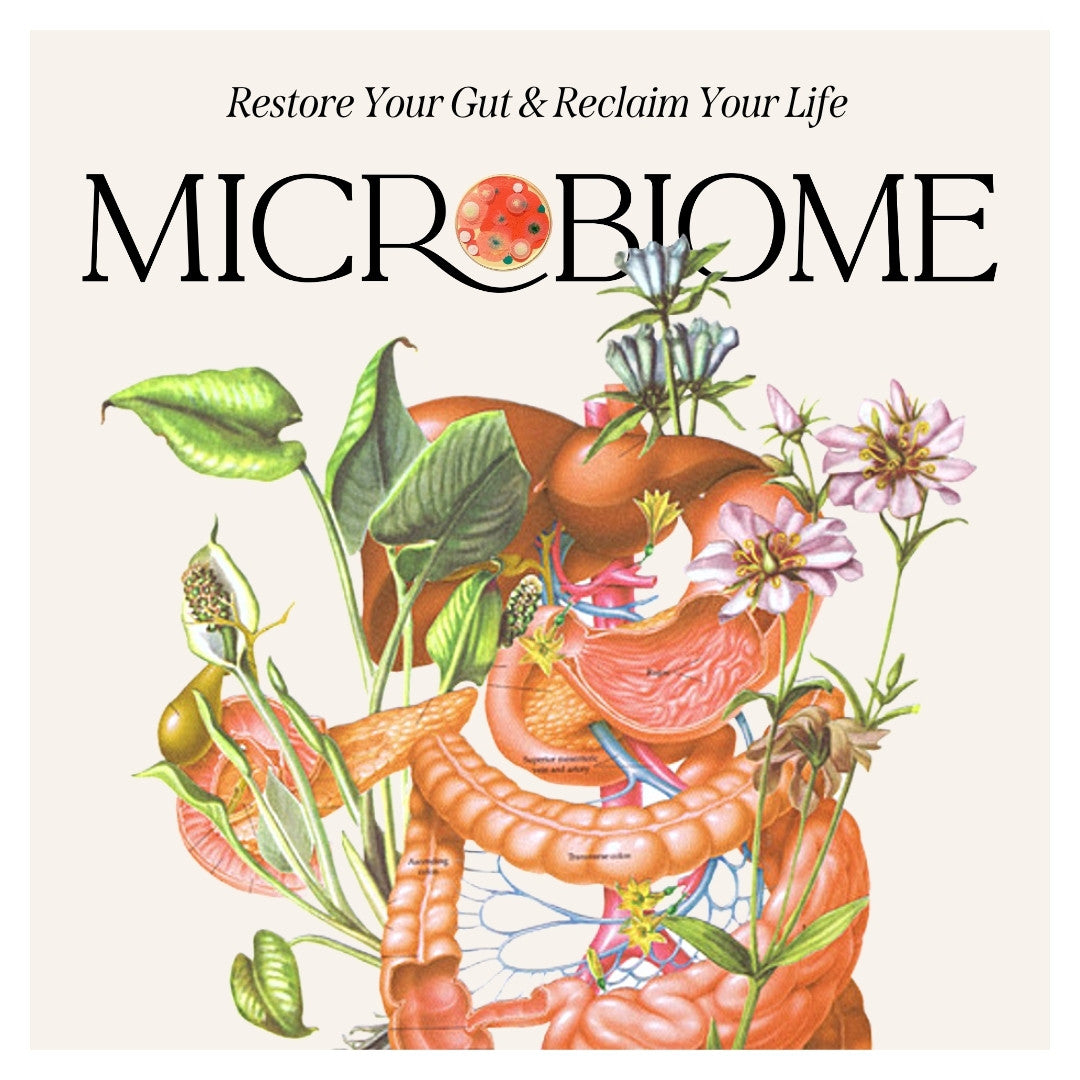

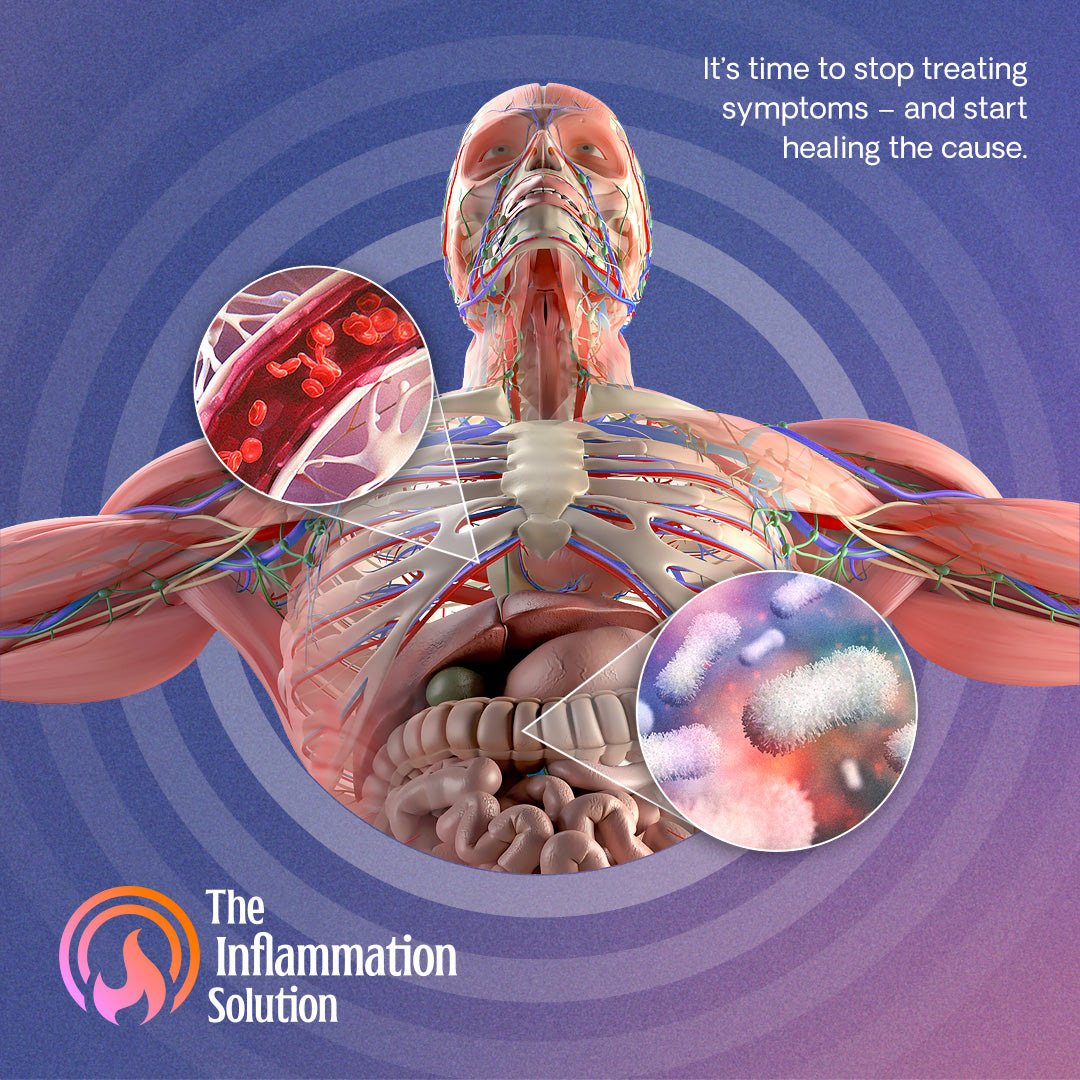

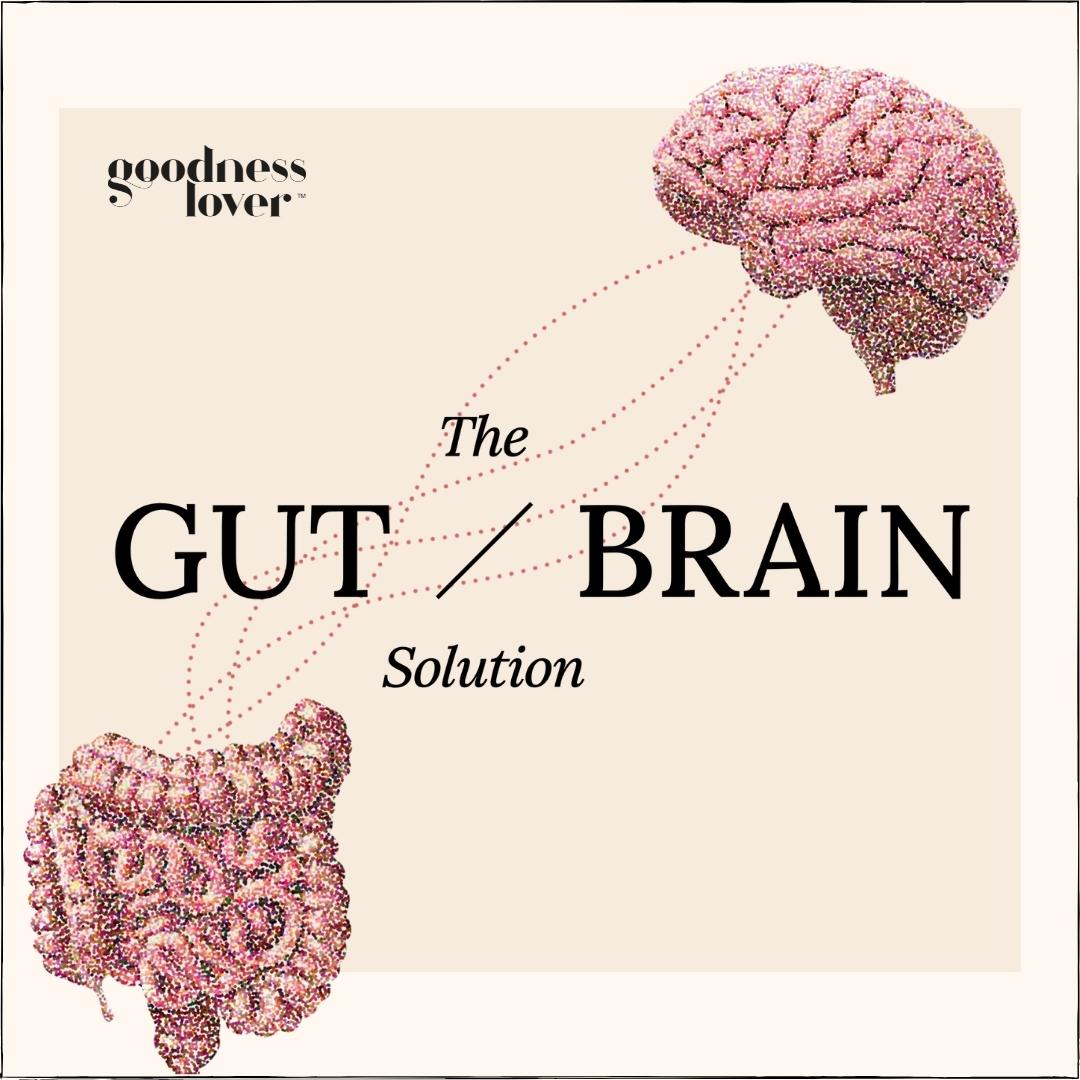

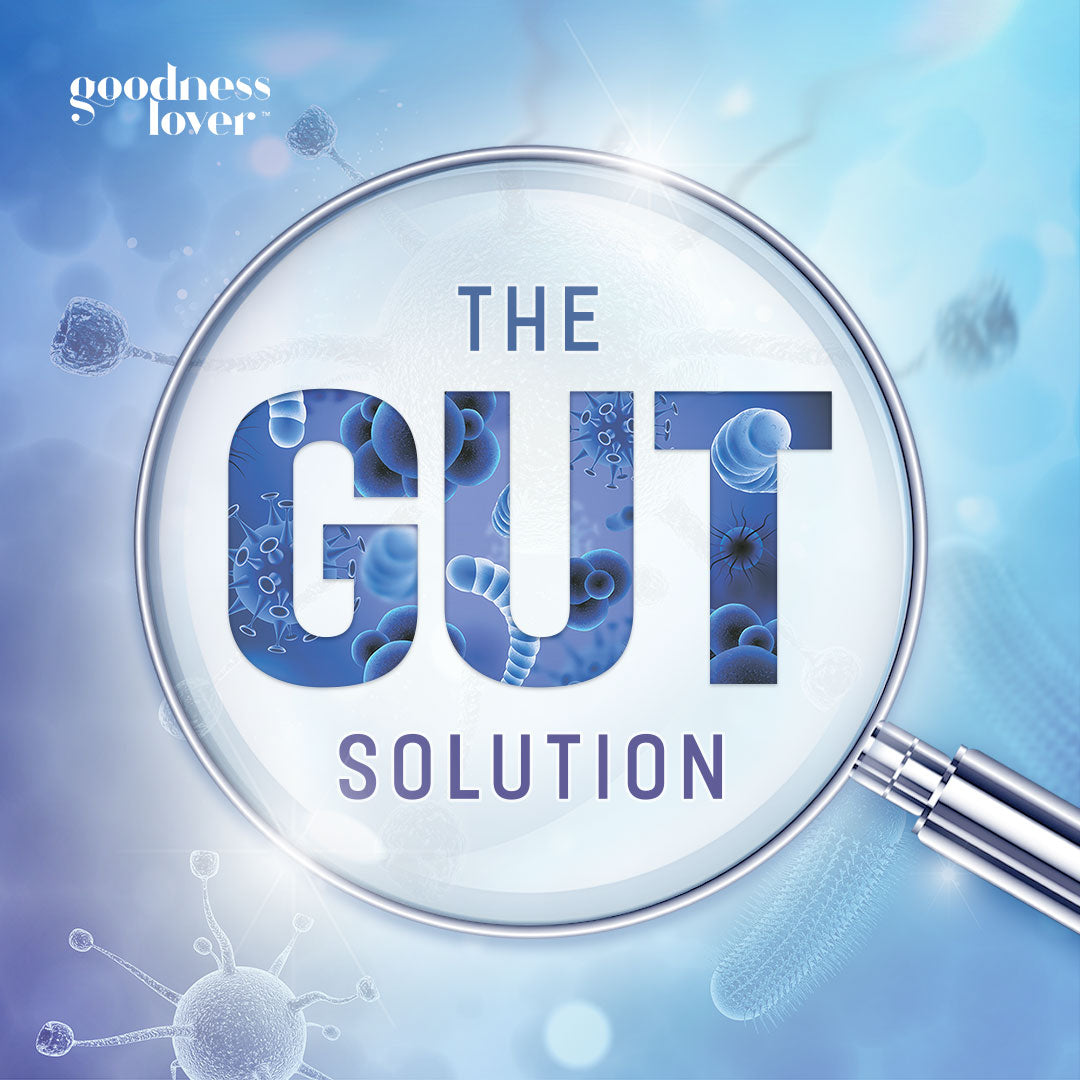
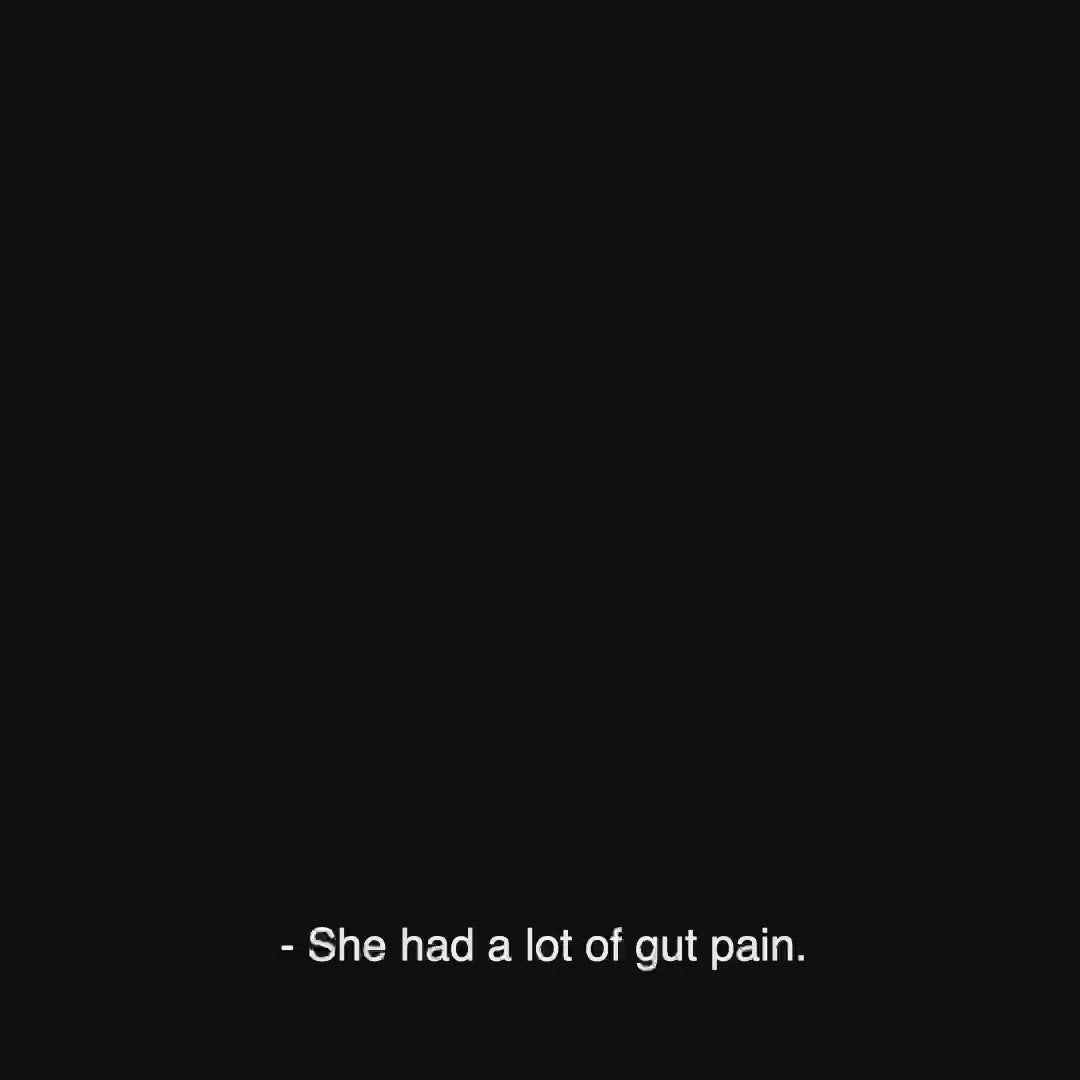
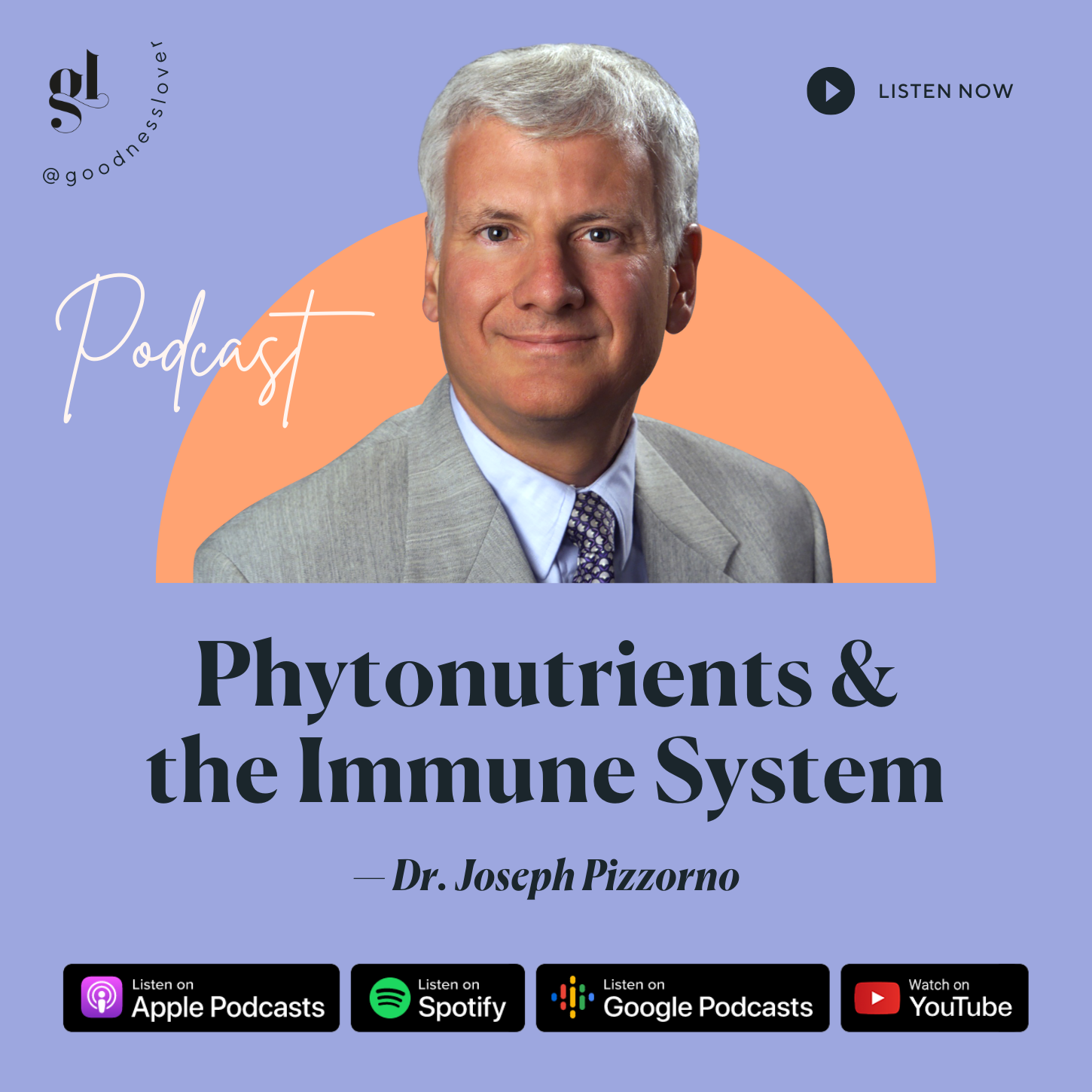
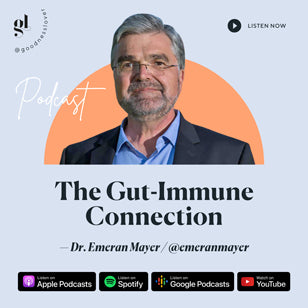

What Do You Think? Comment Below: